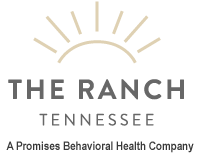Recent findings from a team of American researchers indicate that responses in the body’s involuntary nervous system can help predict which women will recover from PTSD. Current evidence indicates that people with post-traumatic stress disorder (PTSD) have increased chances of benefiting from treatment when they form a bond called a therapeutic alliance with their therapists. In a study published in December 2014 in the Journal of Traumatic Stress, researchers from two U.S. institutions assessed the possibility of predicting which women with PTSD will develop a strong alliance with their therapists during treatment. These researchers concluded that certain measurable responses in women’s involuntary nervous systems serve as predictors of the formation of a beneficial client-therapist alliance. Women with PTSD should always seek out the help of a mental health treatment center to help them heal.
PTSD and the Therapeutic Alliance
The therapeutic alliance is also known by terms that include the working alliance, the helping alliance and the therapeutic relationship. Psychologists, therapists and researchers use these terms to describe the quality of the relationship that develops between mental health professionals and their clients/patients over time. Factors that go into the formation of a strong alliance include such things as a clear explanation of the goals of therapy, an agreement between therapist and client/patient on the terms of treatment, a sense of comfort and ease in therapist-client interactions, a feeling of safety on the part of the client/patient and sense of trust on the part of the client/patient. Absence of one or more of these factors can contribute to a significant weakening of a developing alliance. Known benefits of a strong therapeutic alliance include higher treatment retention rates and improved client/patient adherence to treatment guidelines. In a study published in 2010 in the Journal of Consulting and Clinical Psychology, researchers from Case Western Reserve University assessed the importance of a strong therapeutic alliance to the outcomes of people with PTSD who participate in an intense form of psychotherapeutic treatment called prolonged exposure therapy. These researchers concluded that the formation of a strong alliance in the early phases of treatment substantially increases the likelihood that participating individuals will follow the guidelines of prolonged exposure therapy and complete a full course of the therapy.
The Involuntary Nervous System
Scientists use the terms involuntary nervous system and autonomic nervous system to describe the part of the human nervous system that is not under conscious control. This system has two basic parts: the sympathetic nervous system and the parasympathetic nervous system. Your sympathetic nervous system usually kicks in when you’re exposed to highly dangerous or stressful situations; its activity powers your built-in “fight-or-flight” response and prepares you to either defend yourself or run away. Your parasympathetic nervous system controls vital, everyday bodily processes that include breathing, the beating of your heart and the breakdown of food in your digestive tract.
Predicting Responses to Treatment
In the study published in the Journal of Traumatic Stress, researchers from The New School for Social Research and Smith College used a small-scale project involving 27 women to explore the possibility of using measurements of involuntary nervous system responses to predict who will form a strong therapeutic alliance during trauma-related treatment. All of the women involved in the project had a history of exposure to extreme violence and met the criteria used to diagnose cases of PTSD. Before and after the participants received psychotherapeutic treatment, the researchers exposed them to images of trauma-inducing situations, as well as images of affirmative or positive situations. On each occasion, they took readings of each individual’s sympathetic and parasympathetic nervous system responses. The researchers also assessed the strength of the therapeutic alliance between each woman and her therapist, in addition to assessing the severity of each woman’s PTSD symptoms. The researchers concluded that women who experienced relatively small “fight-or-flight” reactions in their sympathetic nervous systems during exposure to trauma-inducing images had a substantially higher chance of forming strong alliances with their therapists. They came to the same conclusion with regard to women who experienced relatively sizable increases in their parasympathetic nervous system responses when exposed to affirmative or positive images. Critically, the researchers concluded that the connection between these involuntary nervous system responses and a strong therapeutic alliance held true regardless of the severity of the PTSD symptoms in any given woman. Based on their findings, the study’s authors believe that it may be possible to purposefully alter women’s involuntary nervous system responses in order to promote an improved therapeutic alliance during the treatment of PTSD. Women with PTSD should contact The Ranch for help with their mental health. Our PTSD treatment program can help women and men struggling with the disorder to heal. Call 1.844.876.7680 today for more information.

